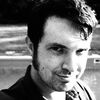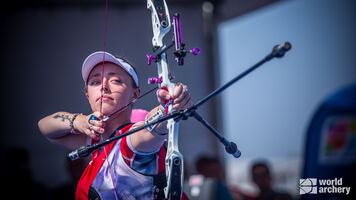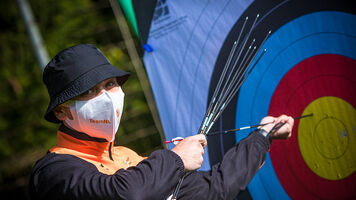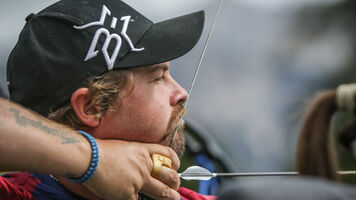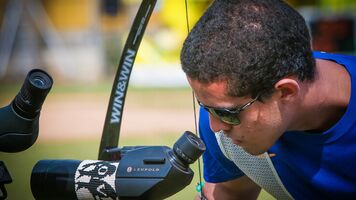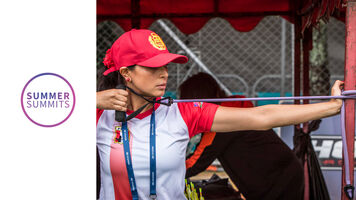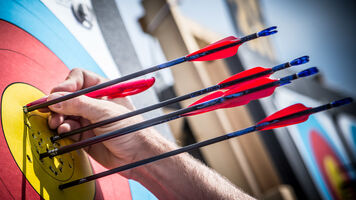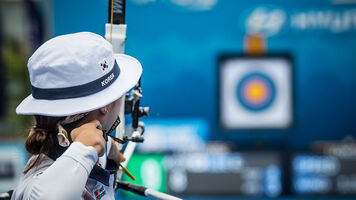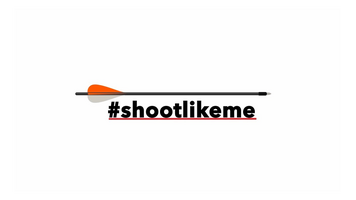Top tips: Preparing for a big archery competition

No international athlete got to where they were without hard work, dedication and preparation. Everyone has their own approach to preparing for tournaments, and each is formulated through practice, repetition and trial and error.
Save yourself some of the learning curve, and take advice from the very best…
Crystal Gauvin 
“I wasn’t on the World Cup circuit last year, so in order to get familiar with the format, I looked at the results from another World Cup, say China, and picked a spot based on how I felt I was doing," explains Crystal.
She says she imagines qualifying in a certain position, “say 12th”, and then shoot through all the matches on her own, scoring against her imaginary competitors on the way.
“I wanted to shoot it like a real match, so I’d shoot it, then pull up the actual score from that round, and if I’d won the match I’d move on to the next phase, and so on.”
Reo Wilde 
“I just try and practice the rounds we’re going to shoot,” says Reo, who won the very first Archery World Cup circuit in 2006.
“So if there’s going to be a 72-arrow round, I’ll shoot like three of them every day.”
He said he simulates the exact competition situation, scoring every arrow and posting just two ends of practice, just like at an international event.
“That way I know where I’m at. That’s it.”
Jayanta Talukdar
“Two weeks before a tournament I do our full shooting schedule, which is 400 or 500 arrows a day. Then around one week before I reduce it to 150 or 200 arrows a day, just to keep relaxed. I think too heavy a schedule immediately before is counterproductive,” says Jayanta.
“I also use something called ‘scripting’, which is writing down your thoughts about the tournament in a positive way. Usually just before leaving I go to the movies or play games, something to relax and take my mind off archery for a while.”

Bernardo Oliveria 
“Don’t focus too much or make any adjustments to form,” warns Brazil’s Bernardo. “Because it will likely mess with your mind. Work on the little things – and do a lot of scoring, of course.”
The conditions are also important for Bernardo. The schedule, too – if shooting will be in the afternoon, then practice should be in the morning. The practice situation should be as close as possible to the real situation.
“You can ask yourself questions to prepare. If it’s going to be in the afternoon, what am I going to do in the morning? Am I going to train or rest in the morning? What is the field like? Sun, and wind and temperature so on. Will the practice field be open and when?”
The critical piece of advice: If you don’t know the answers, ask someone who does!
Maja Marcen 
In the month before an event, Maja shoots 250 arrows a day, then brings it down to 150 in the two weeks or so prior to travelling. During the last week, it’s onto the round of the event – and full scoring.
Maja says it adds, “that little bit of pressure”.
The Colombian team collects in the last few days of the preparation stage, shoot practice matches, team matches and get that team spirit together.

Patrick Laursen 
It’s tough to fit training in for archers of all levels, especially when you have a day job, as well.
“I don’t always have time to prepare as I’d like,” says Patrick, who works full-time besides shooting. “So I just shoot and shoot where I can. I don’t shoot more or less arrows, I just go at it as hard as I can whenever I can.”
The formidable Danish team do collect at Martin Damsbo’s house to practice their group rounds before a major event – and that’s probably why they medal more often than not!
Patrick, more than anything, is realistic: “I have a job and a family and then archery. In that order!”
